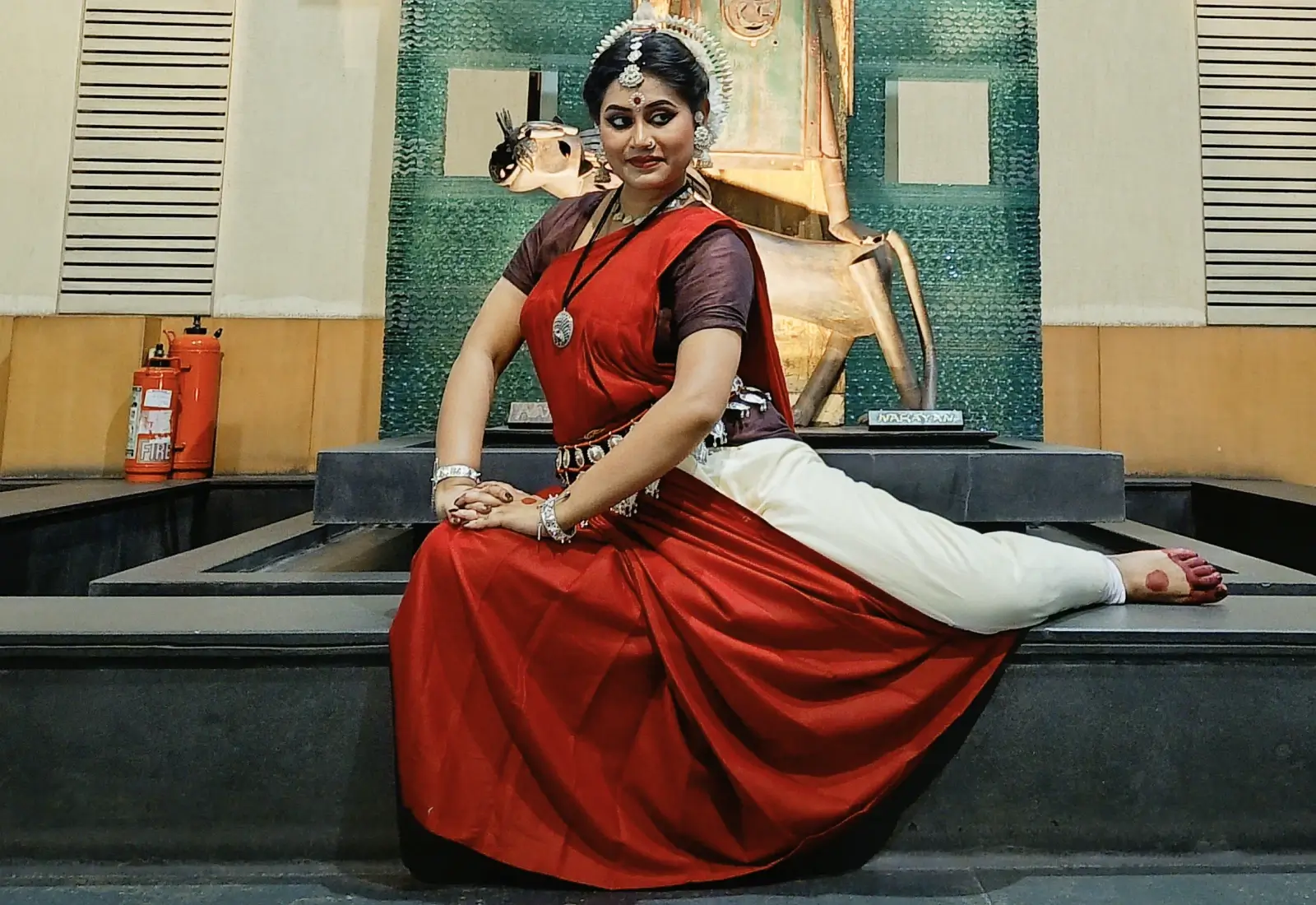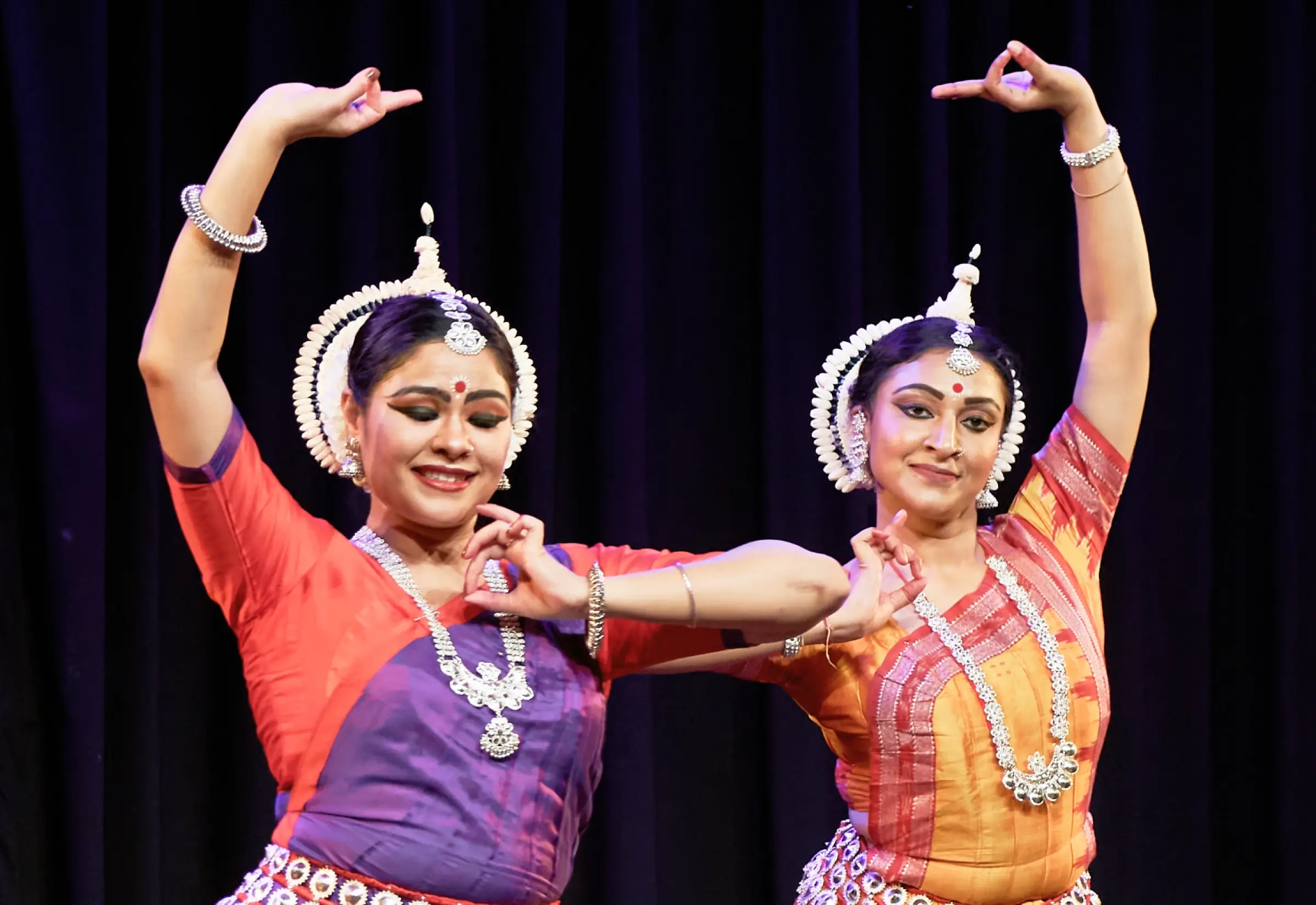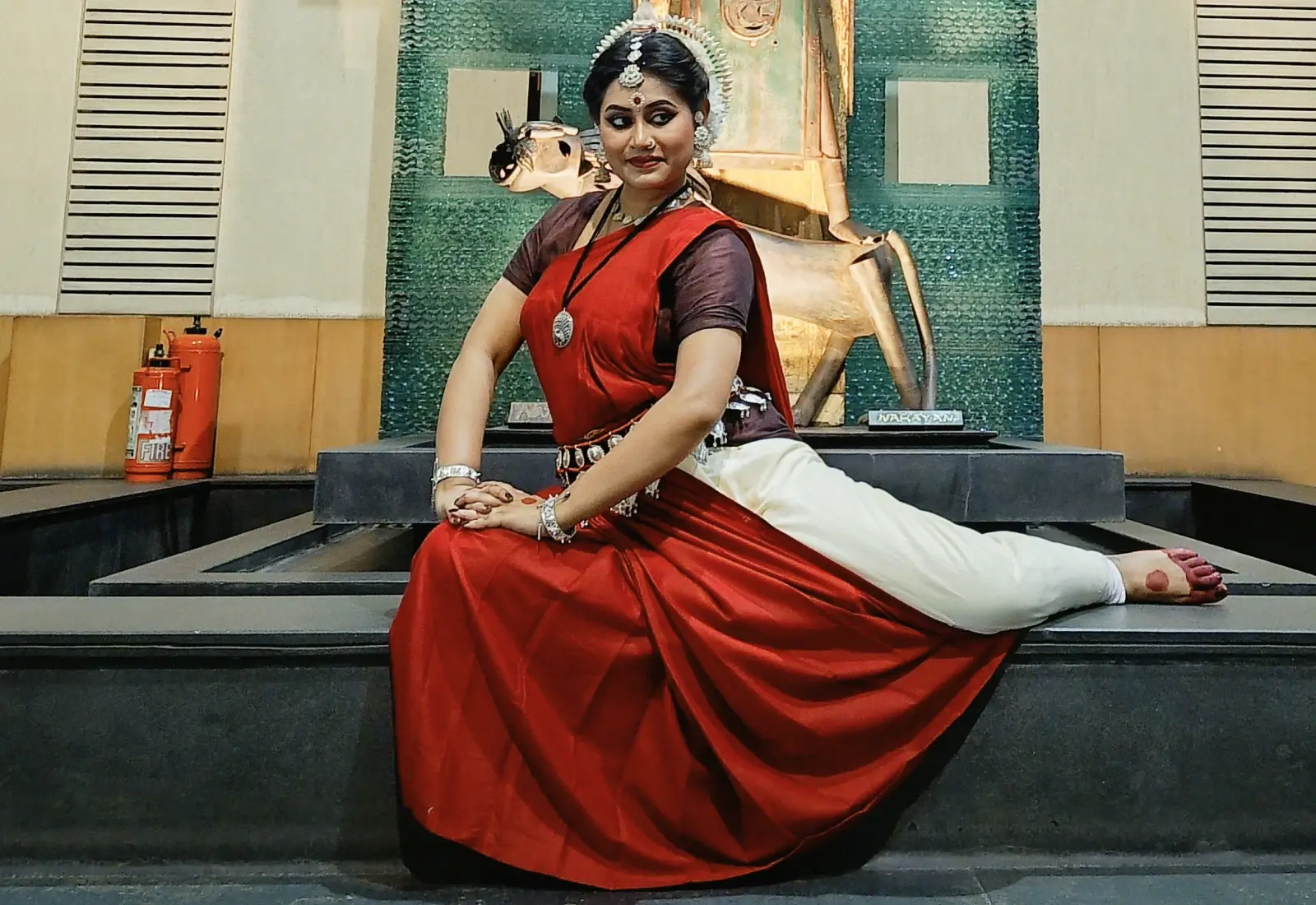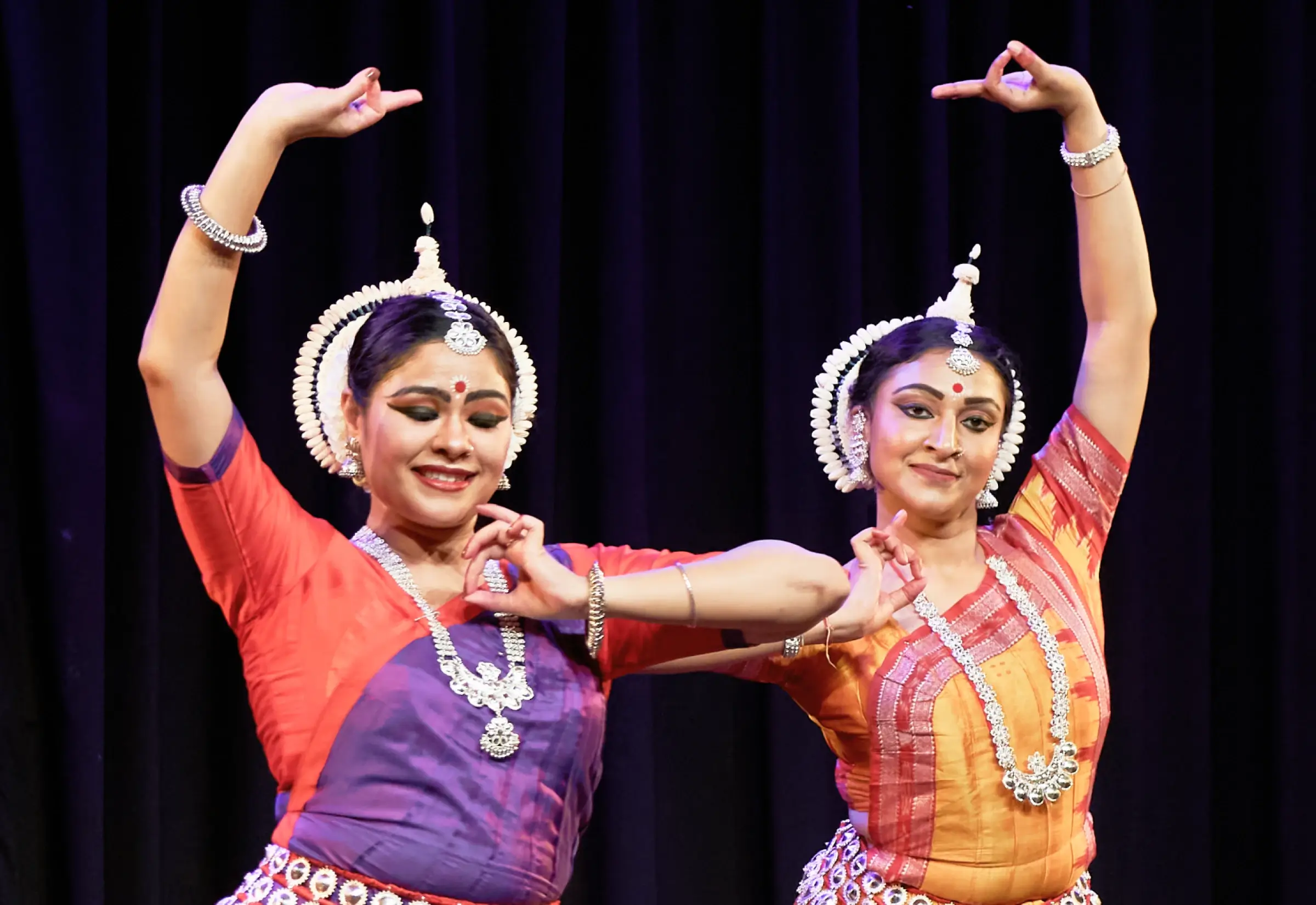Odissi Dance Overview
Odissi is one of the ancient dance forms that originated in the temples of Odisha. It is one of the 8 accredited classical dance forms of India. The present-day Odisha - the erstwhile Kalinga of ancient India- located on the eastern coast of India had once been the epicenter of political, social, educational, cultural activities, and architectural innovation. Its testimony can be seen in the temple’s architecture in Odisha. Of its many cultural boasts - one that still shines brightly to this date - is the Odissi dance form.
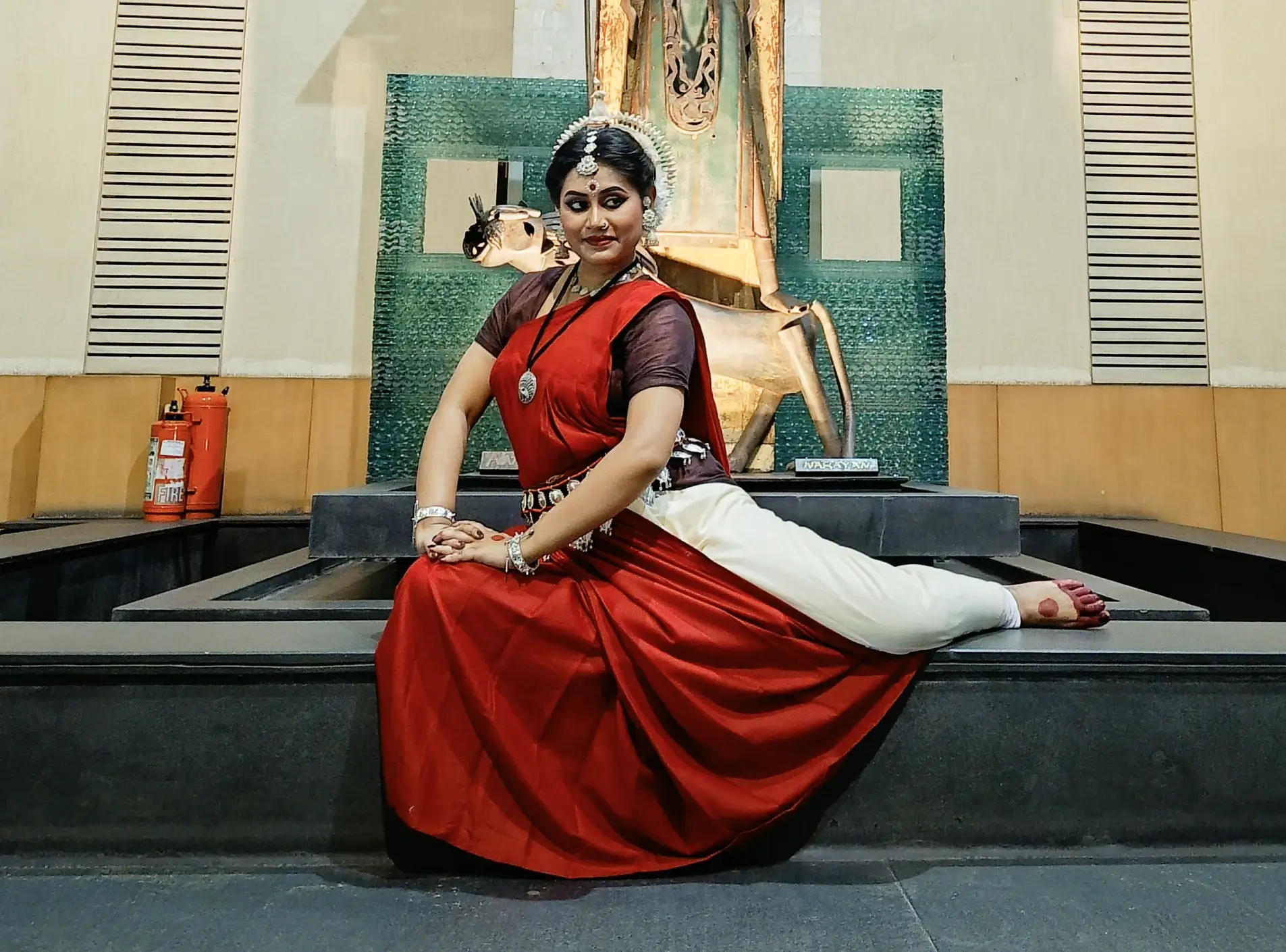
Odissi dance is marked with graceful postures, emotive facial expressions, bright costumes, and makeup. The dancer uses intricate hand gestures to convey emotions, depict various characters, and tell stories. The versatile footwork complimenting the rhythm and music adds to the fluidity and expressiveness of the dance form.
Odissi was predominantly performed by women who presented stories in the form of dance-dramas in praise of Lord Vishnu. Through the many crests and falls of time, this art form transited from the temples to the dance institutes run by sincere pursuers, practitioners, and teachers who trained their future generations to keep this artform alive, and finally to the world stage - as an emblem of India's rich cultural heritage.
Legends have it that Lord Jagannatha loved to hear the poetic verses of Jaidev’s Gita Govindam. These verses were sung in front of him in Jagannatha Temple in Puri to please him. Thus the same verses became the musical base for Odissi dance. In addition, Odisha's classical literature also provided a rich resource for the Odissi dance dramas.
History of Odissi
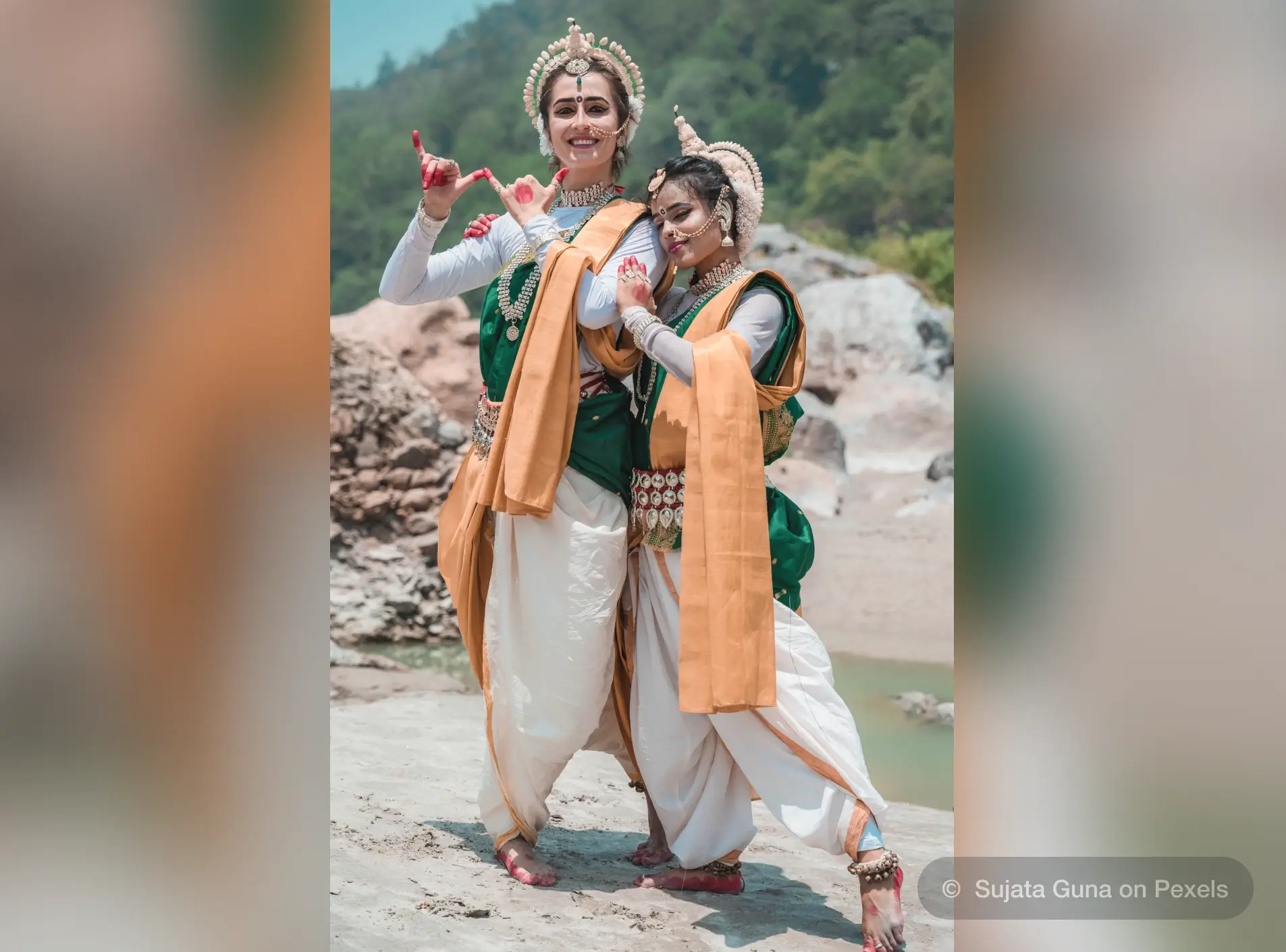
Odissi is believed to be one of the oldest surviving classical dance forms in the country, originating its roots dating back to the temples of Odisha in the 2nd century BCE. As with all other classical dance forms of India, Odissi was also performed as a part of temple worship. The temples of Konark testifies this through the vivid sculptures engraved on its walls displaying the various dance postures.
The origin of Odissi is in no way different than the other Indian traditional dance forms. It is believed that the traditional dance forms transcended from the celestial orb. The dance moves, expression, and postures are heavily influenced by the Tandav Nritya by Lord Shiva and the dance performed by Lord Vishnu in his Mohini Avatar.
The word ‘nritya’ appears for the first time in the ancient text Rig Veda. It dates back to around 1500 BCE. It is believed to have been practiced by celestial beings named Gandharvas and their female counterparts - Apsaras.
The Gandharvas and Apsaras were blessed with an unmatched melodious voice, abilities to create poetries and stories, and graceful body movements. They could cast a spell on the beholders through their performances. It is believed that they entertained the gods and goddesses in their celestial abode through their music and dance.
Ancient
Stepping out of the realms of mythologies - the first documented book on performing art - Natyashastra was penned by Bharat Muni between 500 BCE and 500 CE. Just like all other Indian traditional dances, Odissi takes its source from the same book. The Natyashastra mentions four ‘pravrittis’ or ways of expression delivery - including - Avanti, Dakshinatya, Panchali, and Odra-Magadhi. These ‘pravritiis’ guided the evolution of Indian traditional dances state-wise. The Odra ‘pravritti’ refers to Odisha.
Temples and Royal courtrooms have been the major training grounds for Indian classical dance forms. The same holds for Odissi. The archeological evidence found in the Manchapuri caves in Udayagiri, Hathigumpha inscriptions dated in the first or second century BCE and temples of Bhubaneswar, Konark, and Puri bear testimony to this claim.
During this era, Odissi was performed by female temple dancers called Maharis who dedicated their lives to the service of the deities. They were an integral part of the temple rituals and performed Odissi as a form of devotional expression.
Maharis were custodians of the traditional Odissi repertoire, techniques, and styles. They passed down the knowledge and practices of Odissi through generations, ensuring the continuity of the dance form. Their unique style, characterized by grace, fluidity, and sensuality, became an integral part of Odissi - rendering aestheticism to the dance form.
As we talk about the Maharis, we can’t avoid talking about the Gotipuas - the male dancers who performed outside the temples on streets or festival grounds. During the revival of Odissi in the mid-20th century, Gotipuas played a vital role. Several renowned gurus, such as Guru Kelucharan Mohapatra, trained and groomed Gotipuas, leading to the resurgence of Odissi as a vibrant and recognized classical dance form.
Medieval

The medieval period marked a significant phase in the evolution of Odissi as a dance form. During this period, Odissi underwent changes in its structure, repertoire, and patronage.
Odisha was under the rule of the Ganga dynasty between the 11th and the 15th century. Ganga rulers, the great patrons of art and culture, supported the growth and preservation of Odissi. The sculptures that we see on the temple walls have been commissioned by the Ganga rulers. Their patronage elevated Odissi to a prominent position within the temple traditions.
The royal families gave the Maharis a very honorable position in society. Patronized by the rulers of the land, the Maharis continued to refine the postures, footwork, body movements, expressions, and other detailed nuances of the dance form. They expanded the repertoire and fine-tuned the abhinaya (expressional aspects) of Odissi. Outside the temple arenas, the practices carried out by the Gotipuas assimilated folk movements and rhythms to the traditional repertoire of Odissi.
This is when significant information, features, and details of the repertoire of these dance forms started getting documented. Noteworthy among such treatises include Abhinaya Chandrika by Maheshvara Mahapatra which disclosed various aspects of the dance in explicit detail.
Later, during the Bhakti movement, Vaishnavism has a significant influence on the evolution of Odissi. The love and devotion towards Lord Krishna, particularly the stories of Radha and Krishna, became popular themes in Odissi dance. The lyrical compositions and choreography reflected the Vaishnava philosophy and bhakti sentiments.
The process of evolution went through a paradigm shift during the Mughal invasion followed by the British rule. Repeated Muslim intrusions not only caused major damage to the temples of Odisha but also ripped the practitioners of the respect and freedom they had enjoyed earlier. This was a major onslaught on the once glorious dance tradition. The dancers were demeaned to the state of entertainers at the courts of the Islamic rulers of that time.
Modern
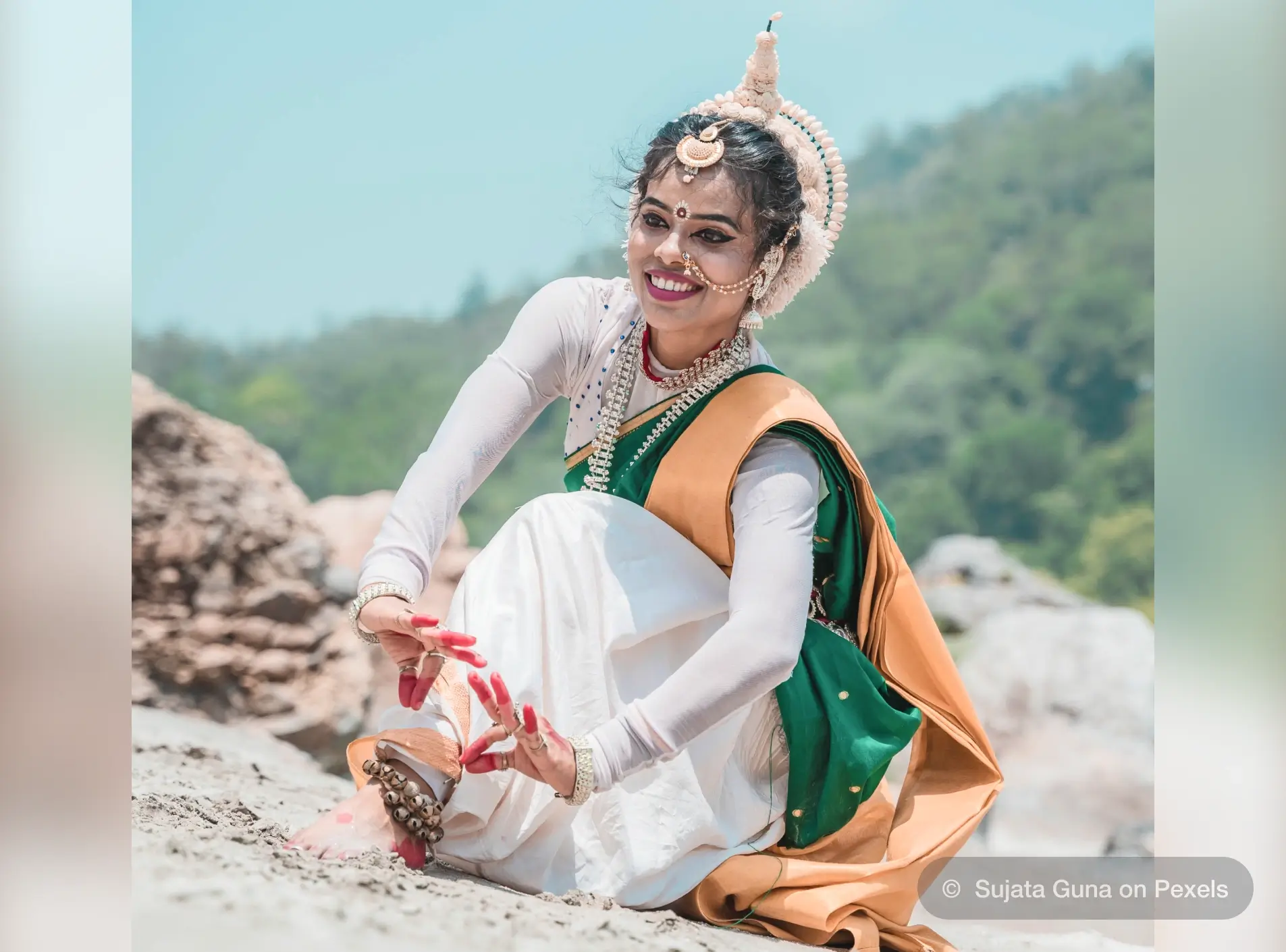
After the Islamic invasions, the stature of Odissi was reduced to bits. Temple patronage was restricted. Public performances met the same fate. The turbulent times of invasions resulted in the destruction and loss of historical records, including texts, manuscripts, and documentation related to Odissi. This loss made it challenging to trace the precise evolution and development of Odissi during this period.
Despite the challenges faced during this period, Odissi managed to survive through the efforts of dedicated practitioners, gurus, and communities who preserved and transmitted the art form through oral traditions and limited documentation.
Subsequently, during British rule, all Indian traditions were ridiculed including the classical dance forms. The missionaries deemed the practice of classical dance unethical and stigmatized the tradition of temple dance as prostitution. The practitioners faced acute poverty.
Yet, like all Indian art forms, Odissi survived this difficult phase that stretched through centuries. Thanks to the grit and tenacity of the practitioners who preserved as much as they could to hand it over to their successors.
The post-independence era ushered in a new dawn that initiated the resurgence of all Indian traditional dance forms including Odissi. The mid-20th century saw a lot of momentum in the revival process. Pioneering figures such as Kavichandra Kalicharan Pattanayak, Guru Pankaj Charan Das, Guru Kelucharan Mohapatra, and Guru Debaprasad Das played pivotal roles in bringing Odissi back to the forefront. They researched, documented, and reconstructed the ancient repertoire, techniques, and aesthetics of Odissi based on historical texts, sculptures, and oral traditions.
Key Principles and Techniques of Odissi Dance
Tribhangi
Bhangas refers to the deflection of the body from the head, torso, and hips. These are categorized as - Samabhanga, Dvibhanga, and Tribhanga. The key technique that gives Odissi a distinct characteristic is the Tribhanga pose.
In the Tribhanga pose, the body is divided into three parts: head, torso, and lower body. The dancer creates graceful bends at the neck, torso, and hips, giving a gentle S-shaped curve to the body. This is also known as the Natavara bhangi in Odissi.
Bandha Nrutya
Bandha refers to the acrobatic poses primarily performed by the Gotipuas - the male dancers. These are key positions that involve intricate and geometric patterns formed with the body, emphasizing symmetry, balance, and control.
Bandha Nrutya requires the dancer to maintain a firm and stable core, along with a strong connection between the upper body, lower body, and limbs. Some popular bandhas in Odissi include Bhumi Bandha (earth pose), Janu Bandha (knee pose), and Hasta Bandha (hand pose).
Pada Bheda
The footwork in Odissi dance is known as the Pada Bheda. Pada means feet and Bheda means variations. The Pada Bhedas contribute to graceful and fluid dance movements. There are a total number of 46 foot positions in Odissi.
Some significant Pada Bhedas include - Sama, Sthana, Apluta, Bhramari, Ekpada Bhramari, Chauka, Alidha, and Pherei.
Hasta Mudra
Like all other classical dance forms, hasta mudra, or hand gestures play a significant role in Odissi dance. Hasta mudras along with body movement and facial expression, help to express the narrative.
The hasta mudras are categorized into -
Samayukta Hasta Mudra- 28 types of single-hand gestures or hasta mudras,
Asamayukta Hasta Mudra - 23 types of joint hand gestures
Nrutya Hasta Mudra - 17 pure Nrutya hasta mudras
Parampara Hasta Mudra - 10 types of traditional hand gestures.
Abhinaya
Abhinaya refers to the art of expression and it involves all the elements - body movements, facial expression, footwork, hasta mudras - in totality. It refers to the effective portrayal of the Navarasas - which include - love (shringara), joy (hasya), anger (raudra), compassion (karuna), disgust (bhayanaka), fear (bhayanka), surprise (vibhatsa), peace (shanta), and sadness (vira).
The dancer's ability to effectively express emotions, portray characters, and communicate narratives through Abhinaya is a testament to their artistry, skill, and understanding of the dance form. It adds a captivating and immersive dimension to Odissi performances, leaving a lasting impact on the viewers.
The entire body becomes an instrument of expression in Odissi dance. The dancer uses subtle movements and postures to portray characters and convey emotions. The gestures of the arms, the curves of the torso, and the fluidity of the spine all contribute to the nuanced portrayal of the narrative.
Specific parts of the face are involved in expressing emotions and storytelling. It includes the eyes (Netra Anga), the eyebrows (Bhru Anga), the forehead (Lalita Anga), the nose (Nasa Anga), the cheeks (Karna Anga), and the chin (Kapola Anga). Each of these body parts is engaged and animated to convey various aspects of the performance.
Traditional Odissi Costume and Makeup
The traditional Odissi costume is a visual spectacle, with its vibrant colors, intricate draping, and embellishments. It reflects the cultural richness and aesthetic sensibilities of the Odisha region, where Odissi originated. The costume not only enhances the beauty of the dance but also contributes to the storytelling and overall visual experience of the performance.
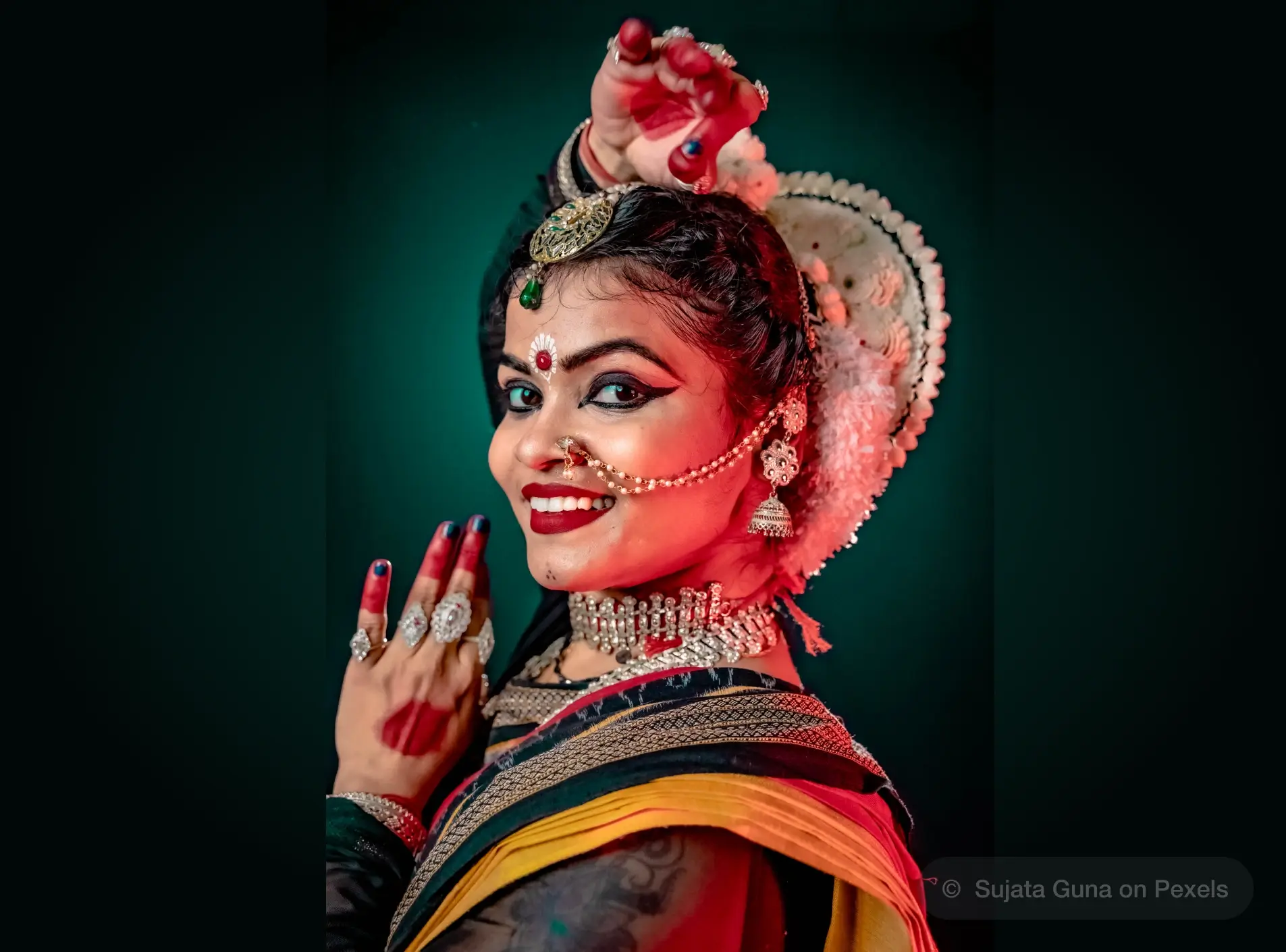
Attire
The costumes are very bright and colorful. Like most of the other classical dance costumes, the female dancers were a saree and the male dancers wear dhoti.
The female dancers drape silk sarees in a unique style known as the ‘Nivi’ drape, which involves multiple pleats and intricate tucking to create a beautiful and flowing silhouette. The male dancers were the dhotis tied to the waist, the pleats flowing in front and the loose ends securely tucked in. Their upper body is kept bare-chested with just a scarf named ‘uttariya’ hanging from their neck across their chest to the waist where it is secured with a waistband. These costumes ensure easy body movement while looking extremely graceful at the same time.
Ornaments
Both male and female dancers wear heavily embellished ornaments that add to the attractiveness of the overall costume.
Women wear multiple neckpieces, heavy earrings, bangles, and ‘bajuband.’ One of the distinct features is the ‘mukut’ or the crest of white flowers worn by the women around the bun which is completed with a ‘mangtika’. A waistband or ‘mekhala’ made of silver and gold is tied around the waist. And finally, the look is completed with ‘ghungroos’ or anklets.
Makeup
The female dancers complete their look with makeup that help to highlight their features. Each and every facial feature play a role in the process of expressing the narrative in coordination with the body movement. Hence, each feature has to be defined properly.
Thick lines of eyeliner are used to define the eyes. The eyebrows are filled to give a distinct shape. The lips are defined with bright red lip color and the forehead is adorned with a red bindi and further decorated with designs drawn out of sandalwood paste.
The male dancers wear minimal jewelry pieces and light makeup that help to etch their character on the stage in an appropriate manner.
Famous Odissi Dancers and Gurus
Pankaj Charan Das
Coming from a family of Gotipua dancers, Pankaj Charan Das received his initial training in Gotipua dance from his father, Shri Khetrabasi Das, and later studied under renowned gurus like Mahadev Rout and Balaram Das.
In the middle of the 20th century, when Odissi was on the verge of extinction, he took up the baton to revive the art form. He was joined in this mission by his disciple - Kelucharan Mohapatra. Together, they undertook extensive research, reconstructed lost dance pieces, and developed a codified technique and repertoire for Odissi.
He was honored with the Padma Shri, one of the highest civilian awards in India, for his exceptional work in the field of dance.
Kelucharan Mohapatra
Kelucharan Mohapatra's legacy as a dancer, choreographer, and guru is celebrated not only in India but also internationally. His contributions have helped establish Odissi as one of the most respected and admired classical dance forms in the world. His artistic vision and commitment continue to inspire dancers and enthusiasts of Odissi to this day.
He established the Odissi Research Centre in Bhubaneswar, Odisha, where he trained and groomed several generations of dancers. His teaching methodology and pedagogy continue to influence the practice and teaching of Odissi today.
He has trained notable exponents such as - Sanjukta Panigrahi, Sonal Mansingh, Madhavi Mudgal, Kumkum Mohanty, and Sujata Mohapatra among others.
Deba Prasad Das
Yet another descent of the Gotipuas, Deba Prasad Das also trained under the tutelage of Pankaj Charan Das and made a significant contribution in getting the dance form back to its glory.
Das drew inspiration from the temple sculptures of Odisha and created timeless compositions that were rich with lyrical prowess, emotional depth, and technical accuracy. His famous choreographies include "Geet Govinda," based on Jayadeva's epic poem, and "Krishna Karnamrita," a dance-drama depicting the life and exploits of Lord Krishna.
Mayadhar Raut
Mayadhar Raut received training from both - Kelucharan Mohapatra and Deba Prasad Das. He worked alongside other luminaries like Kelucharan Mohapatra and Sanjukta Panigrahi to refine and popularize Odissi both within India and internationally.
Raut’s compositions assimilated traditional elements with contemporary influences, including themes from mythology, literature, and social issues. He has to his credit some timeless choreographies that have enriched the dance repertoire of Odissi.
Dance enthusiasts who are inspired to follow in their footsteps and become a part of such a magnanimous legacy of India can explore online dance classes for Odissi and many other Indian and Western dance styles.


